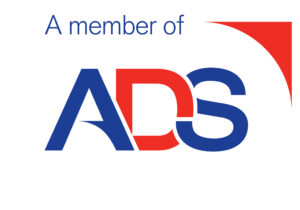Close Circuit Television (CCTV) is a system which is a closed circuit, and all elements of the system are directly connected, unlike commercial TV broadcast where any TV can be tuned to receive the transmitted signal. In this context, the direct connection includes systems that are connected by microwave or other types of bearer.
APPLICATIONS
CCTV is immediately identified with security systems, but also such applications in retail shops, banks, and government establishments. The scope of use scenarios is nearly unlimited. Some examples are:
- Traffic monitoring
- Industrial process monitoring
- Survey work
- Animation
- Show business
- Football stadium surveillance
- Zoo security
- Security
- Surveillance.
CAMERA & LENS
The gathering sensor of any CCTV system is the camera. The camera and lens assemble generate the video pictures that will be transmitted to the monitoring position. Other than specialist systems, CCTV cameras are not supplied fitted with a lens. The lens is provided separately and connected to the camera. The correct selection of camera and lens is critical to achieving the desired results across all lighting, and environmental conditions.
THE MONITOR
The imagery from the camera needs to be accurately reproduced, displayed, and even recorded. A CCTV monitor is almost precisely the same as a domestic TV except that it does not usually have a broadcast receiver capability. Ultimately the monitor’s performance and adjustment will affect the pictures being observed by the system operator. Monitor selection is essential, as is its size and placement. The incorrect size or position will be awkward and unpleasant to use; at worst the picture could be too small to differentiate detail, or so large that the displayed images appear grainy and low quality.
SIMPLE CCTV SYSTEMS
The most straightforward system is a camera directly connected to a monitor by a coaxial cable with the power to the camera being provided by the monitor. This arrangement is known as a line driven system. Multiple cameras can be connected to a single monitor if it has sufficient powered coaxial connectors. However, only one source can be observed at a time.
MAINS POWERED SYSTEMS
Camera systems can be AC powered from a domestic mains source, and a separate coax cable carries the video product from the camera to the monitor. This method allows cameras to be further remote from the monitor position as a line driven camera may only pass the video along a coax to a distance of up to approximately three hundred metres.
The arrangement allows for greater system flexibility. When more than one camera is required a video switcher can be provided. Using a switcher any camera can be selected by the operator for viewing, or a sequence can be set to rotate cameras through the screen most suitable to the application.
MULTIPLE CAMERA DISPLAYS
Where all cameras are required to be viewed either a monitor per camera is needed, or a Quad Screen Splitter. As the name implies, this allows the presentation of four cameras on a single screen. Many quads now incorporate digital image processing. This means that image is compressed to a quarter of its size. However, each picture will only be 25% of the screen resolution.
VIDEO MOTION DETECTION (VMD)
A single operator watching multiple displays will soon tire, and not be able to see all activity all the time. The primary function of a VMD is to relieve CCTV operators from the difficulty of monitoring many screens, that may not change for extended periods. A VMD can be set to react to different types of activity observed by the camera and alert the operator, and even activate recording.
PAN & TILT (P&T)
In many applications, an area to be covered can do so with multiple fixed cameras. This can be an expensive proposition, and inflexible to unforeseen activity as the operator is unable to manipulate the camera’s field of regard in azimuth and elevation, therefore not able to track a moving target beyond what the camera can observe. A P&T allows the operator to be controlled from a fixed location and direct the camera anywhere within the arcs of the P&T.
VIDEO RECORDING
Analogue video recording still exists, but it is rare. The predominant method of recording video is by Digital video recording. Digital recording is virtually the norm with the use of analogue VCR’s rapidly declining. Today’s Digital Video Recorders (DVR) have combined the functions of multiplexing, video motion detection, recording. DVR’s allow more flexibility in picture quality, video storage, and retrieval management.
LIGHTING
The science of illumination is complex. With regards to CCTV, an understanding of the principles of light is essential to the design of a CCTV system.
Insufficient light = No Imagery.
The characteristics of light affecting a CCTV system are:
- Light level in Lux
- Reflectance
- The wavelength of the light source.
Light level and reflectance are associated and decide the camera sensitivity. The wavelength is related to the spectral response of the camera.
Whatever illumination is going to be used on a CCTV system, it is necessary to make a detailed site survey. The position of every light should be decided with relation to the scene to be viewed.
It may not be practical or desirable to provide light by conventional methods for specific applications. Some areas are just too big to illuminate, or the lighting needs to be discreet, possibly for security reasons. Such illumination can be provided by Infrared (IR) illumination.
Other types of CCTV illumination frequently used are Tungsten Halogen which is commonly used in forecourts and factory areas. Fluorescent lighting gives light in the blue-green end of the spectrum and being “cold” emits almost no light in the IR spectrum; often used in offices and as warehouse lighting. Light Emitting Diode (LED) lighting is increasingly popular due to the high reliability, very long life – 10 years or more, and low power consumption.
NETWORK
In the beginning, coaxial cable was the method of transmitting video from the camera to monitor, for various reasons such as range, bandwidth, ease of installation, and low attenuation. Internet Protocol (IP) Networks are digital networks that provide data services. Most organisations today have large data networks already; often with spare capacity. There are some downsides to this integration of data and imagery on a single infrastructure, usually the effect on data patterns caused by streaming video, and problems with network reliability and resilience.
Many definitions have emerged to describe the word “Network”. What drives a network is an interconnectivity.
Networks can be made up of IP cable, ISDN, phone lines, fibre optics, microwave transmission, or even a mix of all bear types.
FUNDAMENTALS OF CCTV
This document has touched briefly upon the fundamentals of CCTV. This is a technology sector that is continually evolving and keeping pace with advances in digital systems.
“Big Brother” is a phrase a phrase in common parlance for more than eight decades now. Big brother is exclusively associated with the negative images of CCTV (and an awful reality television show). But would George Orwell, approve? I believe that Orwell would support many of the applications of CCTV.
CCTV is a cost-effective method of providing security. The advanced technology of modern cameras can protect assets with continuous and seamless monitoring. Relatively inexpensive CCTV has reduced and in part replaced expensive security guards.
CCTV systems are essential today, because:
- Reduce Cost and Risk
- Prevent and Deter Crime
- Full-time Coverage
- Encourage Good Behaviour
- Prevent Safety Incidents
- Assist Law Enforcement.
Hopefully, this blog has enlightened you on the principles and importance of CCTV.
If you have any questions relating to the legal aspects of the use of CCTV, please contact Proelium Law. For queries and advice surrounding installation of complex CCTV systems, you may wish to contact Securitatem Installations. You can find out more and contact them through their website at www.securitateminstallations.com
Barry ET Harris MBE is a consultant for Proelium Law LLP, he is a veteran of 23 years’ service in the British Army, he combines specialist operational experience with wisdom gained from extensive commercial consulting, executive, and management expertise in his specialities gained in complex environments and high-risk jurisdictions worldwide.
Need advice?
If you’d like further information, or to discuss working with us, please get in touch







